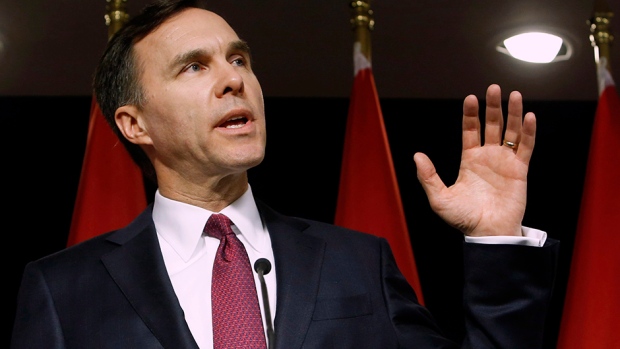Aug 26, 2016
Ottawa runs nearly $1-billion deficit in first quarter of fiscal year
, The Globe and Mail

The federal government ran a $995-million deficit over the first quarter of the fiscal year, an outcome Ottawa says is roughly in line with projections in the March budget.
The nearly $1-billion deficit over the first three months of the fiscal year that began April 1 stands in contrast to a $5-billion surplus over the same three-month period the previous year.
Finance Canada’s monthly Fiscal Monitor, released Friday, stated that Ottawa ran a $1.1-billion deficit in June of 2016. The federal government ran a $1.1-billion surplus in June of 2015.
The department later added that the first-quarter figures “are broadly consistent with the fiscal projection for 2016-17 presented in the budget.”
Finance Minister Bill Morneau’s March 22 budget projected a deficit of $29.4-billion in the current fiscal year, followed by a $29-billion deficit the next year and a $22.8-billion deficit in 2018-19. The budget did provide a firm timeline for returning to annual surpluses.
The Liberals campaigned in 2015 on a plan to deliberately run deficits in order to pay for infrastructure investments, arguing that borrowing costs are currently so low that Ottawa can afford to run a deficit without growing the size of the federal debt-to-GDP ratio.
However, the Liberal Party platform promised the size of annual deficits would be kept at “less than $10-billion in each of the next two fiscal years.” In government, the Liberals argued that larger deficits were needed because economic conditions had worsened.
Mr. Morneau’s deficit projections faced some criticism because they include a $6-billion adjustment each year to account for forecasting errors and unforeseen events.
That means that if the economy performs as forecast and actual spending proceeds in line with the budget, the size of the final deficit numbers could be smaller than forecast.

